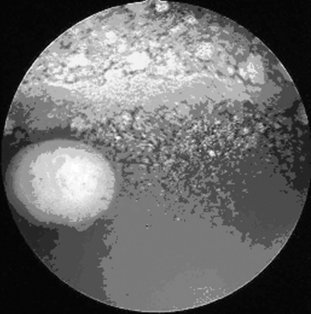CHAPTER 133 Equine Motor Neuron Disease
Equine motor neuron disease (EMND) is a neurodegenerative disorder of the somatic lower motor neurons of horses. The disease was first described in 11 horses in 1990. Results of epidemiologic, laboratory, pathology, and experimental studies strongly support vitamin E deficiency as the primary risk factor for EMND. Pathologic changes are generally limited to the lower motor neuron system. Laboratory and pathologic findings are supportive of an oxidative disorder affecting ventral horn somatic motor neurons, especially those supplying muscles with highly oxidative type 1 fibers. The lipopigment deposition seen in the retinal pigment epithelium of affected horses is a result of light-generated oxidative damage. The increased lipopigment in motor neurons and central nervous system (CNS) capillary endothelial cells also reflects increased lipid peroxidation in the CNS.
CLINICAL FINDINGS
Horses with acquired EMND are 2 years of age or older. Clinical signs generally seen are acute onset of trembling, a short-strided gait, almost constant shifting of weight in the pelvic limbs when standing, and excessive recumbency. Muscle wasting is noticeable, and, when queried, owners often remark that weight loss was apparent before the onset of trembling. Funduscopic examination reveals brown streaking discoloration (Figure 133-1) in nearly 40% of affected horses, although visual impairment is rarely reported. The tailhead is often carried in an elevated position, and the head and neck are carried in an abnormally low position. In a smaller percentage of horses, trembling and constant shifting of weight may either not occur or not be observed, and the predominant clinical sign may be muscle wasting. Although these clinical signs are characteristic for EMND, other neuromuscular disorders, especially certain chronic myopathies and equine dysautonomia, may have a similar clinical appearance.
Stay updated, free articles. Join our Telegram channel

Full access? Get Clinical Tree



